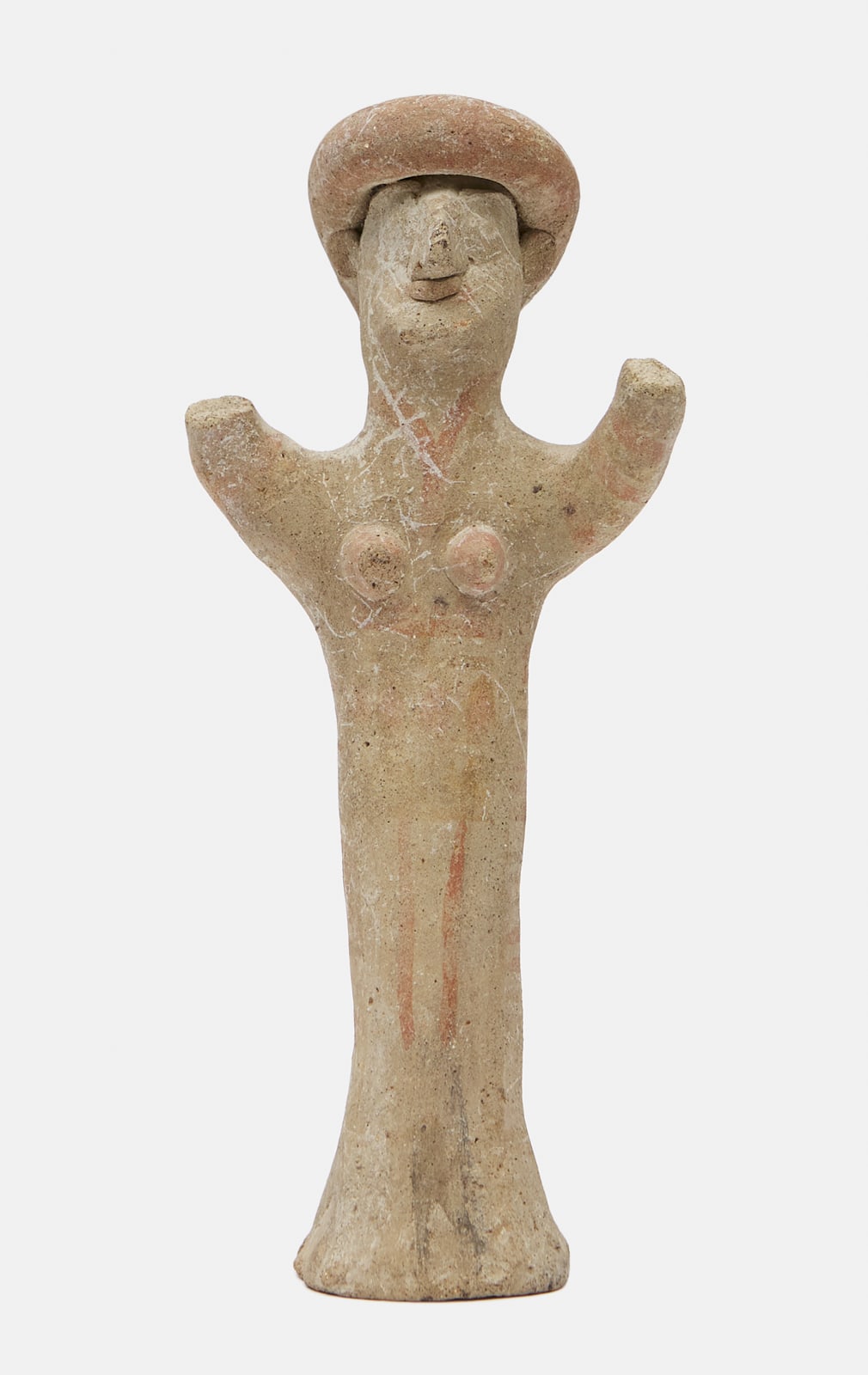-
Artworks

Anon
A Cypriot figure of a Goddess, 7th Century BCpainted terracotta8 1/4 x 3 1/8 x 2 in. | 21 x 8 x 5 cmThe Archaic period preceded the Classical period and gave rise to the expansion of permanent settlements, agriculture and societies in the Mediterranean and Middle Eastern regions. At the beginning of...The Archaic period preceded the Classical period and gave rise to the expansion of permanent settlements, agriculture and societies in the Mediterranean and Middle Eastern regions.
At the beginning of the first millennium BCE, Cyprus was organised into independent kingdoms before falling under the rule of the Assyrian Empire during the 8th century BCE. After a brief period of independence following the death of the last great Assyrian king, Ashurbanipal, the Egyptians gained control over Cyprus during the 6th century BCE. Through centuries of political upheaval, Cypriot pottery began to reflect the influence of both Greek and Egyptian art.
The present votive terracotta figurine depicts a goddess wearing a large headdress and raising her arms in worship. Her long cylindrical body stands on a flared base and the figure has been constructed from separate pieces of clay. The goddess is decorated in red and black paint and remains in remarkably fine condition considering that examples such as this are commonly found painted over or in fragments.